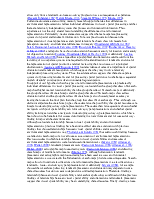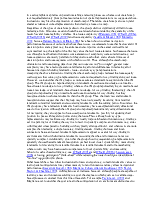














Individual differences in the representations of novel environments
Olessia Blajenkova, Michael A. Motes and Maria
Kozhevnikov
Department of Psychology, Rutgers University, 101 Warren Street, 333 Smith
Hall, Newark, NJ 07102, USA
Available online 1 April 2005.
Abstract
The present
research investigated individual differences in representations of a novel
environment. Thirty-eight participants traversed an unfamiliar route over two
floors of a building and drew sketch-maps of the route. Participants also completed
a mental rotation task and route knowledge tasks: orientation (pointing to
nonvisible landmarks), landmark recognition, route tracing on a floor plan, and
route retracing tasks. Based on spatial accuracy, participants’ sketch-maps
were classified as one-dimensional, two-dimensional, and three-dimensional, and
the types of sketch-maps were associated with participants’ spatial ability and
their performance on route knowledge tasks. Our findings showed that individual
differences in visual–spatial abilities predicted the types of environmental
representations that adults formed and thus provide evidence against
stage/sequential models that attribute differences in environmental
representations exclusively to differences in experience.
1. Introduction
2. Method
2.1. Participants
2.2. Procedure
2.3. Route description
2.4. Tasks
2.4.1. Sketch-map task
2.4.2. Orientation task
2.4.3. Floor plan route-tracing task
2.4.4. Landmark recognition task
2.4.5. Visual–spatial ability test
2.4.6. Retracing task
2.4.7. Interviews
3. Results
3.1. Sketch-map drawings classification
3.2. Description of additional sketch-map characteristics
3.3. Analysis of additional environmental knowledge measures
3.3.1. Orientation task
3.3.2. Floor plan route-tracing task
3.3.3. Landmark recognition
3.4. Visual–spatial ability test
3.5. Retracing task
3.6. Analyses of interviews
4. Discussion
Acknowledgements
References
1. Introduction
Interest in cognitive representations of environments ranges from city planning (e.g. Lynch, 1960; Appleyard, 1969; Antes, McBride, & Collins, 1988) and geography (e.g. Montello, 2002) to spatial cognition and reasoning (e.g. Tolman, 1948; Thorndyke & Goldin, 1983; Tversky, 2003). Since Tolman (1948) found that more general spatial representations of an environment (i.e. beyond chained stimulus-response associations to a goal) guide spatial navigation, considerable research on cognitive representations of environments has focused on the development of such representations with maturation among children (see Piaget & Inhelder, 1967; Siegel & White, 1975) and with experience among children and adults (e.g. Devlin, 1976; Thorndyke & Hayes-Roth, 1982; Aginsky, Harris, Rensink, & Beusmans, 1997). Developmental researchers have suggested that children's abilities to represent environments follow a developmental sequence from concrete, isolated, egocentric representations to abstract, hierarchically integrated, allocentric representations (see Piaget & Inhelder, 1967; Siegel & White, 1975). Furthermore, researchers have suggested that adults’ development of representations of environments follows an analogous but experience-based sequence (see Siegel & White, 1975). In the present study, however, we question whether adults’ representations necessarily follow such an experience-based sequence, and we instead propose that individual differences in visual–spatial ability predict the types of representations that adults form.
Although there are variations in the definitions, sequential/stage models of the development of environmental representations typically draw distinctions between landmark representations (i.e. knowledge of visually distinct objects and scenes in the environment), route/procedural representations (i.e. sequentially organized knowledge of locations encountered along the route and actions performed at the locations) and survey representations (i.e. spatially organized knowledge of locations and routes) (e.g. Siegel & White, 1975; Thorndyke & Goldin, 1983). According to sequence/stage theorists, children's abilities to represent environments (see Piaget & Inhelder, 1967; Hart & Moore, 1973; Siegel & White, 1975; Moore, 1976) and adults’ representations of environments (e.g. Appleyard, 1970; Siegel & White, 1975; Evans, Marrero, & Butler, 1981; Thorndyke & Hayes-Roth, 1982) progress in a specific sequence. Siegel and White, for example argued that (1) landmarks are first remembered, (2) actions are associated with landmarks, (3) landmark-action sequence pairings are organized to form routes, (4) an objective frame of reference is established, and (5) the routes are remembered within the objective frame of reference as survey representations. Children's representations then will depend on their specific stage of development, but adults’ representations will depend on their experiences (e.g. number of times traversing the routes) in the environment.
To test sequential model predictions of adults’ representations, Thorndyke and Hayes-Roth (1982) examined the survey knowledge of employees who had worked at a building 1–2 months, 6–12 months, or 12–24 months and of a group of participants who had no prior experience in the building but who were allowed to study the building floor plan. Survey knowledge of the building was assessed by having all of the participants judge straight-line distances between landmarks (a Euclidean distance estimation task), judge distances between landmarks along specific routes (a route distance estimation task), indicate directions to landmarks from various points in the building (an orientation task), and indicate the location of landmarks relative to two reference locations on an otherwise blank page (a landmark placement task). Thorndyke and Hayes-Roth found that greater experience within the building positively correlated with performance on Euclidean distance, landmark placement, and orientation tasks. Thorndyke and Hayes-Roth also found that survey knowledge could be acquired from studying floor plans (i.e. without direct navigation experience); however, participants who formed the survey representations from studying floor plans were less accurate on the route distance and orientation tasks than employees who had navigational experience within the building.
Although the above data seem to support sequential/stage models (Thorndyke & Hayes-Roth, 1982) and these models are considered a dominant framework for environmental representations (see Montello, 1998), several studies have revealed data that challenge the experience-based sequential/stage progression from landmark- to route- to survey-type representations of environments. Many studies have revealed rather wide individual differences
Уважаемый посетитель!
Чтобы распечатать файл, скачайте его (в формате Word).
Ссылка на скачивание - внизу страницы.